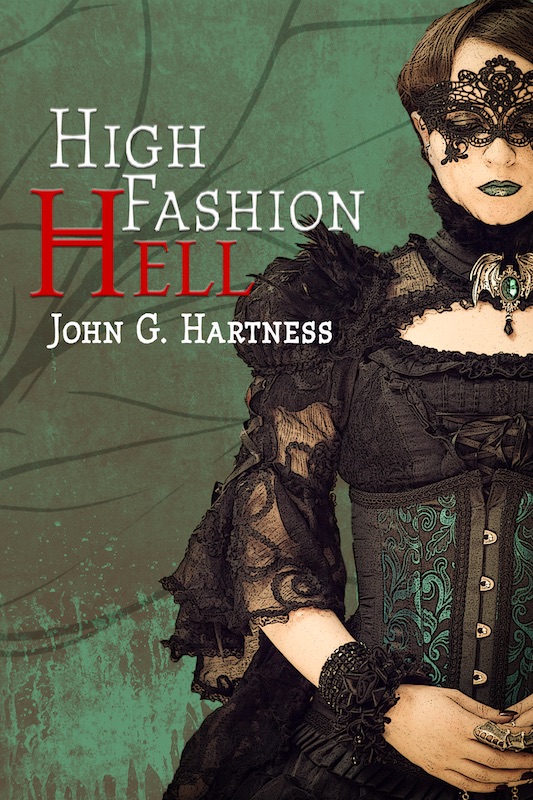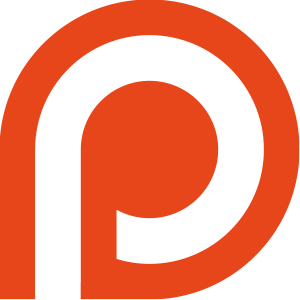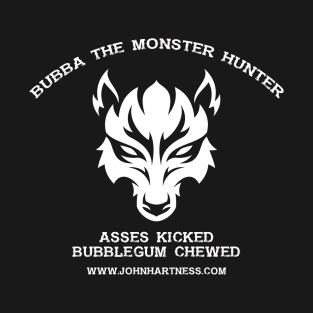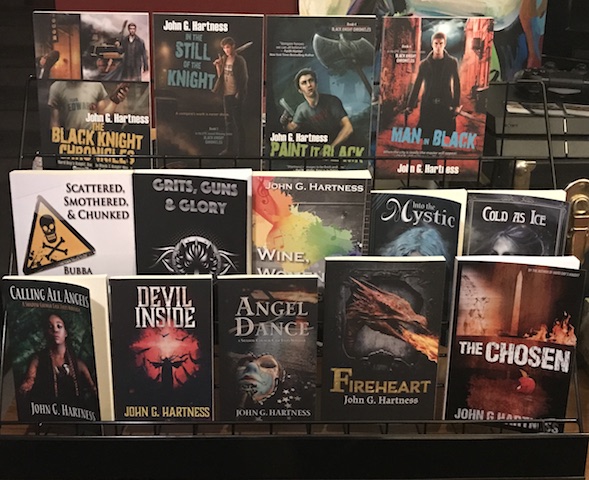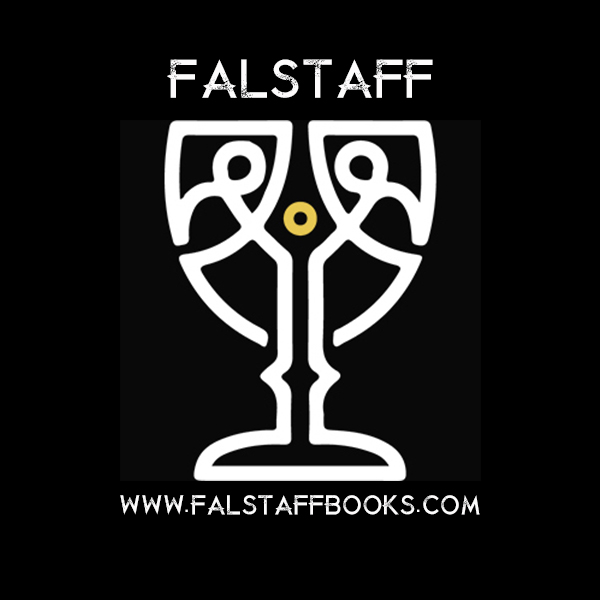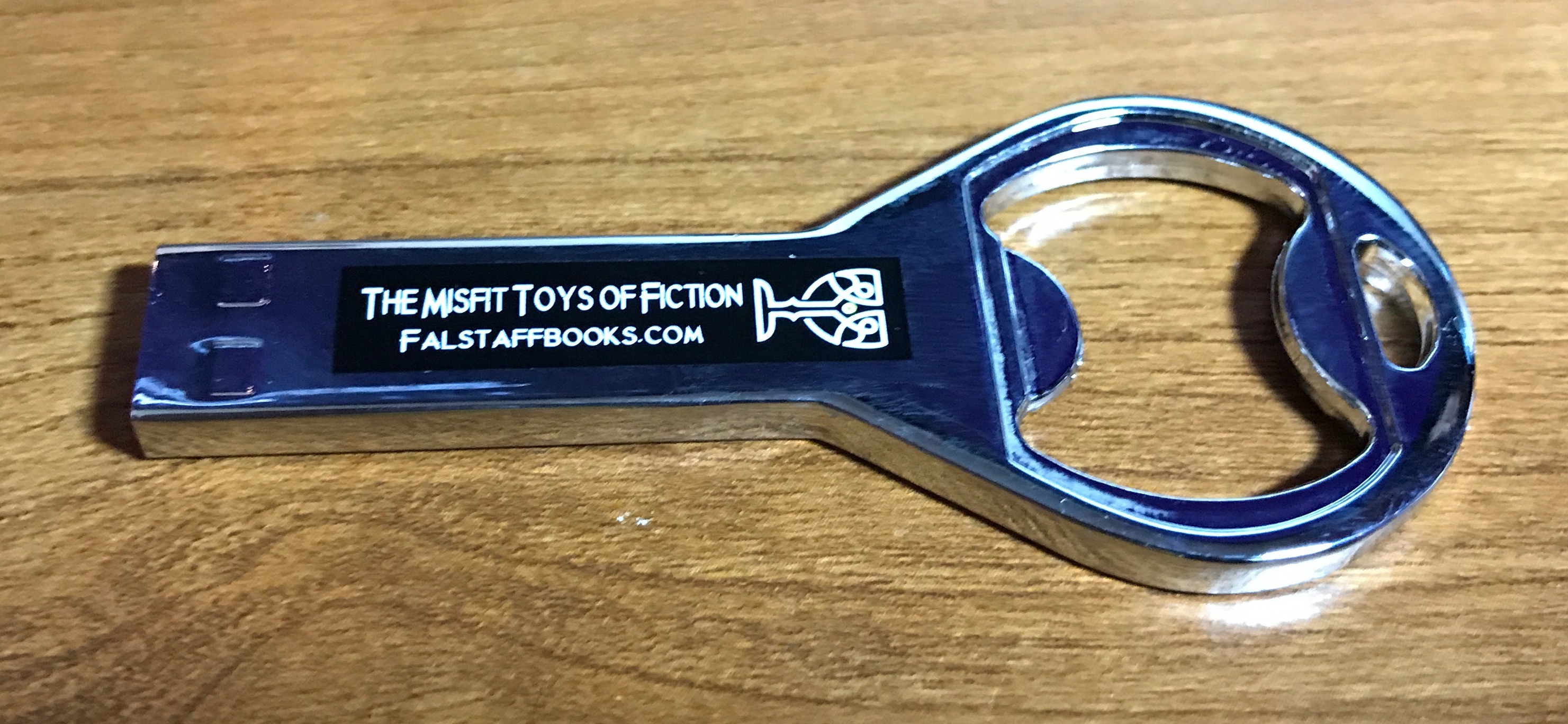by john | Feb 17, 2015 | Guest Blogs, Writing
Welcome back Selah Janel to talk about Women in Horror Month! For more Selah, check out her website.
Although I grew up something of a scaredy-cat, admittedly I’ve always been drawn to the horror genre. I was the one always begging friends to tell me blow-by-blow details of the movies I wasn’t allowed to see, the one reading the descriptions of horror movies off boxes in video stores when my parents weren’t looking, the one who may or may not have run an underground library for R.L. Stine titles and urban legend collections out of my locker in Junior High. I think we take for granted that women seem to be designated as chainsaw fodder or final girl in the genre, when there are truthfully a lot of other roles if we keep an open mind and are open to a lot of different titles. I also don’t think it’s that unusual that women make awesome horror authors. I could give you the standard answer of how we’re emotional creatures and at the end of the day we always have to be aware while walking down the street, when we’re meeting someone new, when we have to walk away from a table and leave our drink unattended, when protecting our children, etc.
However, I think there’s another reason women of my particular generation are drawn to horror and happen to be good at it. It’s a little thing I like to call the 1980’s.
Stay with me here. Yes, the eighties were time when slasher films ruled and women’s roles tended to be reduced to victims for the most part, but that’s not what I’m talking about. To really get why my ilk are into the genre, you have to go to a whole other medium entirely: children’s cartoons.
Eighties nostalgia has gotten a lot of flak over the years. Yeah, a lot of the cartoons were made off toy lines and they weren’t always drawn very well. A lot of the Saturday morning installments didn’t even last all that long, if a whole season. What they were, however, is utterly, completely, cracked out.
Let’s just take a look at some of my early influences, eh? The first Care Bears movie features a book that could be considered a riff off the Necronomicon. Heck, the second movie contains shapeshifting demons and a variation on possession. Yes, the villains are either dealt with or reformed, but can you imagine that even existing in a theatre for four-year-olds these days? My Little Ponies had gateways to other dimensions and a dark ooze that nearly destroyed Ponyland. Rainbow Brite had her color drained on at least one occasion, a Lady Lovelylocks villain went into a deep coma-like sleep and nearly died. One of the Misfits in Jem nearly died from strange plant scratches. She-Ra was repeatedly kidnapped, drained of her powers, almost-tortured, and who knows what else. The Ewoks were forced into slavery on their cartoon at certain points, and one of the girl Ewoks learned quickly not to try to play magic to her advantage. Villains and sidekicks alike nearly had their souls sucked out in a few franchises and it was just another Saturday for all us little girls watching. For the puppet crowd, Jim Henson’s The Storyteller featured devils and heroine-beating trolls, and the Skeksis of The Dark Crystal haunted our nightmares for ages because of their soul-sucking abilities and we loved them for it. Disney regularly played cartoons from their vaults, including things like where Pluto dreams he’s been sent to hell and is tortured by a bunch of animated cat devils.
The Real Ghostbusters just plain existed. Seriously, this show was amazing for how bizarre it was until it was dumbed down for little kids. I still remember an episode where the ghostbusters got sent to another dimension where ghosts hunted people and their ghost counterparts chased them down like criminals. It was intense, mind-bending stuff. In short, beautiful.
The nineties tried, but by then everything was either taking existing franchises and turning the characters into children, or trying slightly different variations of the same ol’ same ol’. It was always strange to me that people got so freaked out about Tales from the Cryptkeeper, when things like that had been a part of my entire tender youth, and no one had complained because “they were just cartoons based on toys.”
My point is, those things were considered normal for little girls or for girls and boys alike. I admittedly question some of the gender divide, though, because I knew a lot of boys who collected She-Ra figures along with He-Man and quite a few little girls who could quote you episodes of The Real Ghost Busters. Along with all the sparkly, we regularly got our dose of freaky, otherworldly danger. In some cases, it was like Lovecraft was reincarnated as an animator. Whether this was people groping for a plot or just throwing something out there, who knows, but it gave us permission at a very young age to let our weird out and not be apologetic about it. It was okay to be villains who did whatever was necessary, to be heroes who were kind, yes, but still had to go to great lengths and nearly lose their souls to get their way. Adventures were better the more elaborate and the darker they became.
Yes, there were gender divides in the toy aisle, but in a lot of ways, girly cartoons were pretty subversive for their time, more so than a lot of the things I’ve seen these days. The plots were not always great, the art was eh, true, but the weird factor was amazing. I’ve talked to a lot of women in my age grouping who laugh and remember a lot of those episodes fondly, either because they loved them or because they were traumatized by them and now find it amusing. Some have even passed things like the original two Care Bears movies onto their own daughters. A lot of these girls graduated to appreciate Stephen King and Anne Rice alike, to not just want to be the chick who hangs out with vampires, but who had ambitions of maybe, someday, becoming the head vampire.
These days, yes, women write horror from a female standpoint at times, but I think we don’t take into consideration that that isn’t the only way we can write horror. Maybe, if we started letting our girls get a dose of weird early again, there wouldn’t be such a barrier for them to the genre. It would be just another day at the toy aisle, just another Saturday of cartoons. For those of us already grown up, yes, we definitely have different takes on the genre, and some of them will inevitably have to do with gender. However, we also have a huge universal appreciation for the dark and the bizarre. Why? Why not? After all, we were brought up that way.
by john | Feb 16, 2015 | Book Spotlight, Evolution of Evil, Writing
Am I Evil?
By Jay Requard
Believe it or not, I’m pissed off.
I’m pissed off because I failed Conjer, Emma, and whoever that vampire-fop that ended up beheaded at the end of the third act. I failed them all, and every bit of it has to do with the fact that I didn’t know if I could be what I needed to be. I didn’t know if I could be evil. I consider myself a Heroic Fantasy author, so you probably imagine the kind of cognitive dissonance that entailed.
The first story, The Chase, appeared in The Big Bad: An Anthology of Evil, which featured many great stories featuring truly messed-up things being done by really messed-up people. But that didn’t mean we did evil. I am one of those (psychos) that take the time to read the reviews that followed on Amazon, and beyond a lot of really nice reviews and some well-earned praise for some really talented authors, there was one review that struck me in the face with shame.
“They’re really light on evil,” is essentially what was said, when paraphrased to protect who said. I’ll leave it to you to go and guess which review I’m talking about.
“Light on evil.”
That’s not good enough. It’s not good enough for me, specifically, because I know that I failed. I tried to make Conjer a darker, moodier version of The Man with No Name, one of my favorite characters from the Sergio Leoni-classics. Yet that character isn’t inherently a villain, and villains are supposed to be the bread and butter of The Big Bad II.
So here comes The Big Bad II. I submitted Ghosts and Sands to Emily Leverett and John Hartness, having to fight my way again into the second anthology. I wasn’t invited, I wasn’t called to submit another story—I had to work. And I had to figure out “am I evil?”
To me, evil is someone walking into town knowing he is going to kill scores and smiles about it. To me, evil is killing someone who was trying to do a job they didn’t want to be doing in the first place. To me, evil is making victims pay for rescue and salvation. To me, evil is having a good time doing it.
These are things that happen every single day in the real world, performed by those high and low, lawful and criminal. They may seem mundane to readers, in the grand scheme of things, but that’s because the readers are evil too—they accept this deepening shithole around them while they turn to the next page.
Conjer came back, ready to unleash hell. He’s not the hero you need; he’s the curse you have to endure. And curses always find a way to claim you.
I hope I didn’t fail this time. You can be the judge and answer my question: Am I Evil?
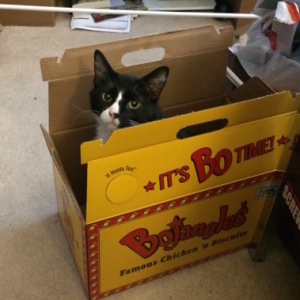
by john | Feb 12, 2015 | Literate Liquors
Wherein I talk about anthologies, and my cat jumps into a chicken box.

by john | Feb 6, 2015 | Business of publishing, Literate Liquors
This week on Literate Liquors I talk about SFWA’s new membership rules, and a couple of awesome Kickstarters that I’m backing.
Here’s the link to Queers destroy Science Fiction –
Here’s the link for Worlds of Wonder –
Here’s the whole podcast –
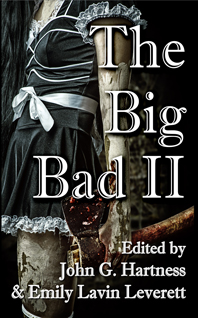
by john | Feb 6, 2015 | Business of publishing, Vampires, Writing
I use Selah Janel’s story in The Big Bad volume 1 as both a cautionary tale on everything NOT to do when submitting to an anthology, as well as a cautionary tale on the benefits of being friends with people in the industry, most notably editors or people who might one day become editors. When Selah and I became friends, I had no intentions of editing anything, much less a series of horror anthologies. But I did, and when it came time to start reading for The Big Bad, I got an email from Selah saying (basically) “I have a story, but I’m running a little late, and a little long. Can I have a couple weeks?” I said “Sure, send it along when it’s ready.” A month later I get another email with a story attached saying (basically) “Here is it, sorry it’s so late, hope you still like me, hope you can use it.”
It was almost exactly 1,000 words OVER the max allowed word count for the anthology. I almost round-filed it immediately, but she was my friend, and that guaranteed her at least one paragraph’s worth of leniency. You can see why I don’t have many friends – it only got her a paragraph. I read it, then waited patiently as Emily (my co-editor and partner in crime on these anthologies) read it. She emailed me and we agreed that the story had done almost every single thing wrong to get included. It was late, it was too long, it was another friggin’ vampire story. We wanted any excuse to hate it.
Sidebar – when you’re accepted into an anthology, after a few acceptances, you stop asking “Really?” and start asking “Where will you put my story?” There are three pieces of prime real estate in an anthology – the first story, which gets read by the most casual readers, the center story, which gets read by a lot of passersby who crack the book open randomly and pick a page, and the final story, which is the closer and wants to be a big finish.
Selah’s story was the closer for Big Bad Vol. 1. It was, quite frankly, one of the best damn vampire stories I’ve ever read. I looked for any excuse not to love it, and she didn’t give me one. I’ve told lots of people at lots of panels at lots of conventions that you can either follow all the rules or be so goddamn amazing that they don’t apply to you. Seals Janel is an amazing writer and I’d read her grocery list. Here’s her story behind the story for Big Bad 2. And no, she didn’t get the closer spot in BB2, we dropped her in the second spot from the beginning, because editors are evil. You see, if you download the free sample from Amazon for the ebook, you’ll get cut off before Selah’s story ends. And that’s going to guarantee a high conversion of samples to sales. 🙂
Plain and simple, I love vampires. There’s a lot of versatility there, a lot of things to explore. One of my favorite vampire movies is The Lost Boys, and admittedly my story in the first Big Bad, “Real Wild Childe” came out of one of the few beefs I have with the original movie: the horrifically lame female characters in cliché roles. While I admire Jami Gertz and Diane Wiest and they’re great in the film, Star and Lucy’s functions are to just kind of be there as love interest and Mom. It’s a shame, because a lot could have been done with those archetypes. The sequels never really bothered to correct the female role issue, either, so it became a mission to write a vampire story where the girls could keep up with the boys and then some. Admittedly, “Real Wild Childe” was also my chance to warp the vampire romance genre beyond recognition, but a lot of it was the chance to have fun with some renegade vampire characters while beefing up the female roles. In a lot of ways, I did a whole reversal with putting Rave at the mercy of all the women in his life, vampire and human.
When the second volume was announced, I was sure I was going to sequel that story. I was excited to keep exploring Rave and Sin’s twisted relationship, as well as Addington’s vampire problem as a whole. Unfortunately, it became evident very quickly that it would be way too much for an anthology story, and I already had the habit of antagonizing the great Hartness with my inflated word counts. I didn’t want to leave that world behind, though, so it occurred to me to go in the other direction and prequel it.
I mention in the original story that Rave and Asha’s sire is their mother, and she’s not a particularly motherly type. Amanda was the perfect character to explore not only the feminine role of mother, but also to mash that up against what a vampire was, and why a typical 1950’s housewife would even want to become one. My research led me on a winding road, and I found the perfect excuse for an underground, mother-centric vampire cult: fear of communism and all-out nuclear war. What if a protective instinct was so great, that you’d do anything to ensure your family line and the wellbeing of your kids, even if it meant killing and drinking blood?
That was a great start at developing the cult of The Family and the character of The Patriarch, but it still didn’t quite mesh up with the Amanda in the original story. What kind of a person would turn into a manipulative, jealous vampire who wanted to clamp down on her kids and rule over them throughout eternity? After all, most parents are more than willing to kick the birds out of the nest at some point, and Amanda had never come across as a loving maternal figure.
As I began writing, I slowly discovered a character who was burnt out, frustrated, and felt overlooked. Her insecurities about her own life fed her jealousy that landed on everyone: her husband’s employees, her friends and fellow cult members, even her own children. She was desperate to be noticed, true, but also desperate for something else. It all made me wonder, what would happen if a mother didn’t necessarily have children because of a great love for them, but because they complemented her idea of what life should be like? What if she looked upon them as accessories that she owned, accessories that weren’t supposed to ever get out of line or go against her thinking? What if that craving for power gave her confidence to try out her powers in increasingly controlling ways, all under the guise of it being in everyone’s best interest? And what would she do if her precious family/accessories dared to try to go against her?
And what would happen if she found out that they may possess the same sort of darkness she did?
Exploring her manipulative nature in “A Family Affair” fascinated me, and I slowly grew to view Amanda as less of a madwoman and more of a complex character. If the story in the first volume was me riffing off my love for the bad boy type vampire in The Lost Boys and an attempt to play with the idea of a human love interest, Amanda became my anti-Lucy in The Big Bad 2. She still loves her children, but for the wrong reasons, and she’s desperate to retain something of herself as she watches the world and her family start to plot on without her. Her evil is more internal, but she still sheds a considerable amount of blood and has no guilt doing it. She freely plays with her family’s minds, and forces them down a dark road that will have significant repercussions decades later. Amanda’s an intense character who will get her way at any cost. She’s dangerous to most of those around her. She’s also a lot of fun to write.
It was also interesting to explore Rave and Asha as humans, to really tinker with who they had been before they became runaway delinquents. Although they’re at the mercy of their mother’s actions, there are also hints that they weren’t innocent from the get go, that maybe they’re more like their mother than they’d ever care to admit. Character relationships and dynamics intrigue me, so it was interesting to put all of that against the workings of a vampire cult and the changing vibe of the 1950’s in general. It’s an odd combination, to be sure, but it’s a fun one, and one that I hope is worth reading.
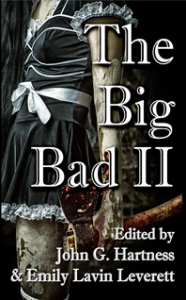
by john | Feb 4, 2015 | Business of publishing, Writing
Not really. But it kinda has felt like that from the outside. Let’s get my view of the facts out of the way first before I go into my conflicted feelings about this whole SFWA v. self-published authors thing.
Starting March 1, self-published and small press authors who meet a certain earning threshold (I believe it’s $3,000 over a twelve-month period for one novel-length work, or some amount of cents per word equaling some dollar amount for short stories – I didn’t really pay attention to the short story criteria) will be eligible to join Science Fiction and Fantasy Writers of America, the professional organization for people who do what I do.
Full disclosure, the Horror Writers Association is also the professional organization for people who do what I do, because nobody can really decide if I write horror or fantasy. But I don’t write romance, which is why I don’t need to worry about joining RWA, which I might anyway, because RWA is a solid organization with a bunch of shrewd businesspeople involved. But I digress.
This is kinda a huge deal. It feels like a much bigger deal than last September, when HWA changed their rules to a very similar structure to allow self-pub and small press authors into the fold. I jumped onto that opportunity, but I’m hesitant about joining SFWA, and I figured I’d use this little corner of the inter webs to explore why as much for me as for anyone.
Let’s start at the beginning, back in 2010 when I published The Chosen (now available on audiobook on iTunes, Audible or Amazon). I didn’t have any real idea what I was doing, I was just trying to get my words out there any way I could. So I researched SFWA, because I was writing fantasy, so I wanted to be able to draw on the knowledge of other people writing fantasy. I read the “Join SFWA” page and quickly realized that there was no method for me to do just that. Self-published authors were not allowed a seat at the table.
That stung. I was new to writing, and new to publishing (still relatively new to both, this being year 5 of my journey), and to be told that I wasn’t good enough to sit at the cool kids’ table (again) because I was following a different path to my readers didn’t feel good. And it has continued to not feel good for five years, through friendships with people on SFWA’s board, through conversations about how stupid the rule is with SFWA members and other excluded parties, and I’ll own my pettiness – this as created in me a sense of bitterness about SFWA.
See, the thing is I’m a joiner. I feel like being a part of the professional organization for your field is just what you do. I got a job designing theatrical lighting systems, I joined IES, the Illuminating Engineering Society. I started working with high schools on their lighting systems, I joined the North Carolina Theatre Conference, then the Southeastern Theatre Conference. I’ve sat on the board of directors of many regional professional societies because I’ve always felt like networking, camaraderie and having the back of your fellows in the field is what you do.
But now I was in a place where I was told that I wasn’t a professional enough writer to join the professional organization for writers in my genre. All because of the way I was publishing my work. That didn’t sit well with me. It certainly didn’t sit well with me once I started earning money as a writer, because I very quickly eclipsed the earnings requirements for membership, and then the ONLY thing keeping me out was a label. And that just felt wrong. I wasn’t excluded at conventions from drinking with writers because I didn’t have a SFWA card. I wasn’t excluded from guest status at a con because I wasn’t a SFWA member. I wasn’t excluded from anything, except membership and that label of “professional.”
So I became bitter. And fairly vocal about it. I may have mentioned more than once that $250 worth of short story sales to magazines could get you into SFWA, but ten grand worth of short story sales to readers wouldn’t get you in.
And I understand that organizational change often comes slowly. God knows I’ve spent enough years in non-profit management to know that. I’ve sat through more board retreats and long-range planning sessions than I care to count, so I know that it takes time to affect change. I also know it doesn’t take five years. And self-publishing had already shifted from being a fringe vanity press swindle to a viable career option before I started with this mess in 2010, so the whole “organizations change slowly” thing lost weight with me about two years ago.
So what do I do now? On the one hand, I want to stand outside the window holding up my sign saying “Screw you, I don’t need you now!” Because I don’t know that I do. I network pretty well on my own. I have con appearances, book deals, friends to blurb my stuff and pretty much everything I need to continue making my career.
On the other hand, I want to be part of the professional organization for my chosen career path. And I do, like a lot of authors, want the affirmation of being labeled a professional by my peers. Because a lot of times I hang with my friends and still feel like a fraud, like no matter what I’ve done, it’s not enough. That’s my issue, not theirs, and certainly no one has ever made me feel that way. But it’s there.
Will a SFWA card make that feeling go away? Do they even give out membership cards? Does HWA? If so, did I lose mine already? I don’t know the answers to any of those questions.
And why did I get my panties in a bunch about SFWA and not HWA? Why did I tweet out congratulatory messages to HWA when they finally pried their collective head out of their collective ass last year and let self-pub and small press authors in? Probably because I didn’t know I wasn’t eligible for HWA membership until I was already eligible. Because I thought I was a fantasy writer, not a horror writer, so I had been focusing on SFWA until somebody nominated me for a horror award, then I started thinking of myself as a horror and fantasy writer.
So I don’t know. Are there benefits to joining SFWA? Certainly. Are any of them useful to me? Probably. Should I just get my head out of my ass and fill out an application? Probably. Would I feel better about this whole issue if any of my emails to a SFWA president a few years ago asking about this issue had ever been answered? Yeah.
What do I want out of this mess? At this point, I think I want to be asked to join. I would like someone affiliated with SFWA to say “Hey, I think you should join SFWA. We’d like to have you, and think it could be good for you and for the organization.”
I don’t expect that to happen, but to be frank, even if I heard about SFWA reaching out to other major self-pub and small press authors to open up membership with open arms instead of begrudgingly, it would probably get the bug out of my butt.
So there are my thoughts on the SFWA self-pub thing, not that anybody asked me. I don’t know if I’ll join. Maybe. At this point it’s not even about the benefits of membership, it’s about whether or not the organization really wants me.
So that’s plenty of word-puking for the morning. I’mma go get a Pop-Tart and get some shit done. Y’all do the same. But stay away from my Pop-Tarts.

by john | Jan 29, 2015 | Book Spotlight, Writing
I promised y’all another edition of The Big Bad, and while it took all of 2014 and a little piece of 2015 to deliver, it’s coming now! The Big Bad II will release on February 24th from Dark Oak Press and Media, and here’s the awesome cover!

Volume 2 includes more stories of evil and monsters like:
Mercy’s Armistice – J. T. Glover
A Family Affair – Selah Janel
Old Nonna – Gail Z. Martin
Letters to Logroth – Jason Corner
Skippin’ Stones – S. H. Roddey
The Sea Witch – Kasidy Manisco
A Day in the Life – James R. Tuck
Overkill – Sara Taylor Woods
Voodooesque – Eden Royce
A Fitter Subject for Study – Sarah Joy Adams
Ghosts and Sands – Jay Requard
Teacher of the Year – Riley Miller
Feels Like Justice to Me – Edmund R. Schubert
Portrait of the Artist as a Psychopathic Man – Stuart Jaffe
The House on Cherry Hill – Emily Lavin Leverett
Sticks and Stones – Bobby Nash
Sweet Tooth – Nicole Givens Kurtz
Just Pretending – Linden Flynn
Phone Home – E. D. Guy
I Think of Snow – J. Matthew Saunders
Little Gods – Neal F. Litherland
Drawing Flame – Misty Massey
The Witch Hunter – M. B. Weston
The Cully – D. B. Jackson
You might notice that there is a name missing from that list – mine. I don’t have a story on this year’s anthology, sorry to say. With everything that went on in my life in late 2014, I couldn’t pull my crap together enough to write a good one, and anything I had working wasn’t of a quality to stand beside the stories we had, so I decided not to include a story. I also stepped away from a lot of the editing, leaving the lion’s share of the work to Emily Leverett, who stepped up and made the whole thing happen. We still have a book that we’re both proud of, with some incredible stories by new and established writers, and a couple of tie-ins to existing story or novel series that I can’t wait for y’all to read. This is an incredible collection, and I’m thrilled for y’all to get it in your hot little hands.
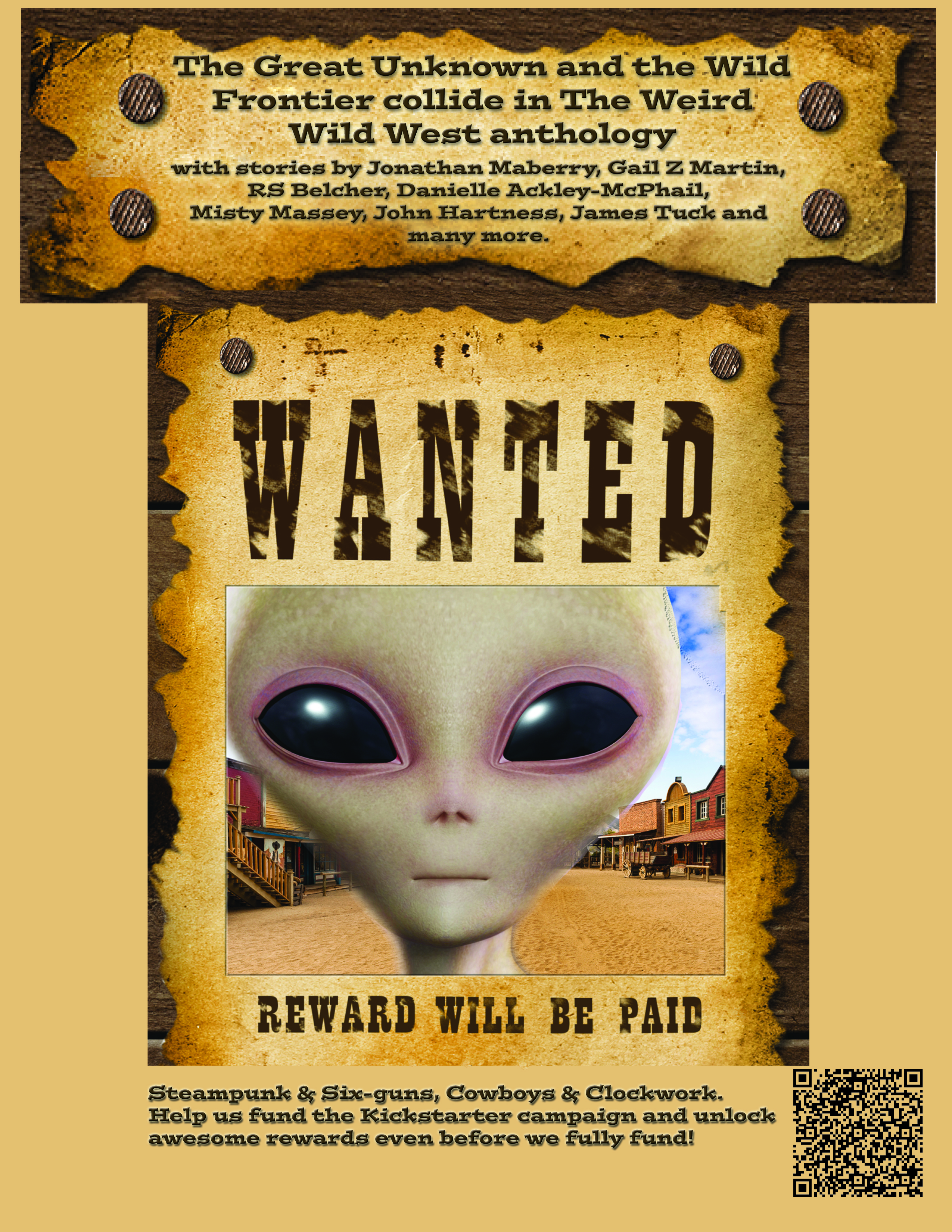
by john | Jan 13, 2015 | Literate Liquors
My dear friend Misty Massey returns to Literate Liquors and we talk about the Weird Wild West anthology Kickstarter she’s putting together, publishing, Kickstarter backlash, the Charlie Hedbob attacks and anything else that crosses our silly little minds. Give us a listen!
Here’s the Kickstarter we were talking about –
Here’s the video from the last time Misty was on Literate Liquors, a couple of years ago!

by john | Jan 6, 2015 | Literate Liquors
Literate Liquors Episode 9 is live! Y’all can download it from wherever you get podcasts, or you can listen over at Magical Words starting Friday, or you can listen right here!
Here are the links I promised on the podcast, like the link to my Patreon Page.
Darin Kennedy’s new release The Mussorgsky Riddle – Releases on 1/12


Jim Bernheimer’s Secrets of a D-List Supervillian


And the Weird Wild West Kickstarter!
by john | Dec 24, 2014 | Business of publishing, Fiction, Writing
So I’ve been on the fence about KDP Select, the tool Amazon offers by which authors make their titles exclusive to Amazon for a period of 90 days and in exchange they get a few perks like being offered for free in the Kindle Unlimited program (think Netflix for books, or a library with a $10 membership fee), the ability to offer your book for free for a promotional time period (you get 5 days that ou can make your book free in each 90-day period) and the ability for Amazon Prime Members to borrow your book from the Kindle Online Lending Library (authors are paid a fee per borrow, and are paid a fee for every time the book is read past 10% in the Kindle Unlimited program).
I’ve had books in KDP Select before Kindle Unlimited (KU) came along, but nothing since the new program happened. When I was in KDP Select, I made one Bubba story free each week through the 90-day cycle, then repeated. So if you wanted to read every Bubba story for free, you could do that. My hope was that people would read the free story, then immediately run out and buy all the rest of them. I don’t know how often either of those things happened, but my sales were pretty steady while I was in the program. But after a while, and with everything that went on in 2014 (well-documented on other posts here and on Facebook), keeping up with the free days just became more than I could managed, and since I hadn’t seen any significant increase in sales I withdrew.
Now the tinfoil hat crowd would tell you that my sales immediately tanked, and I was being punished for leaving the program and Amazon’s mysterious algorithms were skewed to help authors in the program, etc. etc. While all that may be true, my sales didn’t immediately tank – they held steady at about the same level they were when I was in KDP Select. For several months. Then sales did indeed start to taper off, but I don’t think lack of participation in KDP Select had anything to do with it.
I wasn’t writing and publishing new material. Let’s take a look, shall we?
2010 – 2 Publications
2011 – 11 Publications
2012 – 17 Publications
2013 – 2 Publications (there were other things, but I wasn’t necessarily the one publishing them)
2014 – 5 Publications (not counting the 2 this week)
Notice anything about that? Yeah, when I was selling a bunch of books, I was writing a bunch of books. I published more than a book a month in 2012, and not even a book a quarter in the two years following. No wonder my sales declined – my productivity declined. Can’t blame Amazon’s math for that!
So now that I’m writing again, and writing a lot again, why did I enroll the two newest books (Elf Off the Shelf and Raising Hell) in KDP Select? There were a couple of reasons.
1) The Kindle Lending thing and Kindle Unlimited thing suck for novels, but they’re pretty good for short stories. You see, you get paid based on how many things are borrowed, and how much money is in the pool. Lately it’s been a little over a buck. That’s half what I would get from a $2.99 novel if it were sold normally, but it’s TRIPLE what I get from a $.99 short story over it selling normally.
Here’s the math, which most folks already know. If I price a book at $.99-$2.98, I get 35% royalty. If I price it at $2.99-9.99, I get 70%. If I go over $10, it drops back down to 35%. So whenever you buy a Bubba short story, I get $.34. If I get a little over a dollar on the borrows, then I get three times the normal money, and people can read my story for free.
So that’s one reason. The other reason is that I hadn’t tried the program since KU started, and I wanted to see what it was like.
I also wanted to offer Raising Hell for pre-order, and was under the mistaken impression that I had to be in KDP Select to do so. That appears to not be the case, so I was wrong. Oh well, the book is up and available for pre-order and will be released on January 20. I’m pretty excited about this new series, it takes me to a darker place, lets me write in a harder tone, and lets me play with uglier villains. I hope you like it. I was really trying to channel the old Garth Ennis run on Hellblazer, so I hope I did it justice.
Also, if you want more bloggy type things, let me know. I have a bajillion comments to moderate in the queue, but once I get through those I’ll start replying. Until then, you can always find me on Facebook or Twitter. Peace out.









